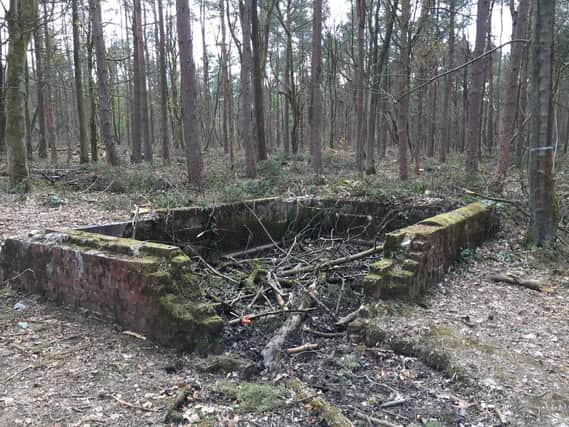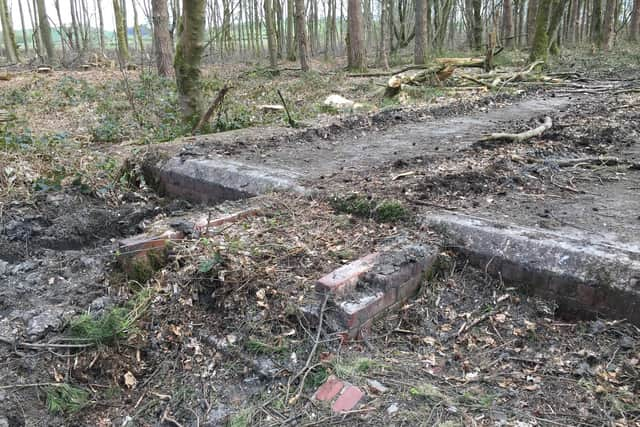Archaeologist promises damage to Redmires POW camp in Sheffield will be repaired following tree clearance work


Thousands of captured soldiers from Germany, Italy and Ukraine were kept as prisoners in both the first and second world wars at Lodge Moor camp, on Redmires Road in Sheffield
Many people still visit the remains today and there are more than 460 members in a Facebook group dedicated to the site’s heritage.
Advertisement
Hide AdAdvertisement
Hide AdBut recently visitors were shocked to find Sheffield Council forest thinning work damaged large concrete bases of the prisoners’ dorms, broke one of the toilet blocks and crushed remnants of sewage piping.


Dinah Saich, principal archaeologist at South Yorkshire Archaeology Service, said they have worked with the council’s woodlands team over a number of years to address issues arising from the plantation on the site.
She said: “Woodland and archaeology are not always a good mix, as tree root growth can damage and disturb archaeological remains. Tree thinning work needs to be carried out periodically and, longer term, thinning within the plantation will benefit the remains.
“We understand the concerns of local people and it is good to know that there is such interest in seeing the remains protected. We want to reassure people that where there has been an impact on this heritage site, we are supporting the woodlands team to restore damage or disturbance.”
Advertisement
Hide AdAdvertisement
Hide AdEarlier this week, Brian Holmshaw, local heritage campaigner, said people needed an apology from the council.
He said: “Much less invasive methods of felling should have taken place - using the driveways at the sides of the site to bring in any heavy vehicles for one.
“People can clearly see from the photographs that there are deep tyre ruts all over the historic prisoner of war camp. These are even now filling with water due to the recent rain. This should never have happened to a site of national historic significance.”
The council said the forestry thinning work was essential and improved access for archaeological work.
Advertisement
Hide AdAdvertisement
Hide AdRuth Bell, head of parks and countryside, said: “The encampment site was decommissioned and flattened after the war so building debris is strewn across the site and the thinning work has exposed more of this. We acknowledge some minor disturbance was caused and this will be rectified. A site visit and recommendations were made by the South Yorkshire Archaeology Service and further remedial work will take place later this year.
“Now the forestry work is complete we continue to work with archaeologists to help them interpret the site as part of the Heritage Lottery Fund project. The additional features exposed by our thinning work will be recorded as part of this. We will also be working with the local Friends Group so they can be involved in future developments and projects to help improve Redmires as a wildlife, amenity and heritage site.”